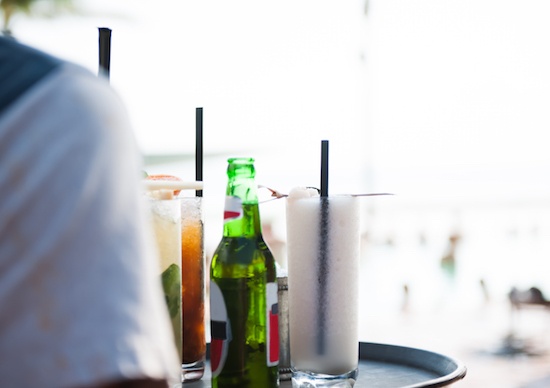
A well-prepared bar makes for a more efficient and more profitable operation. So how can you improve your prep work? A panel session at the Tales of the Cocktail conference in July offered some insight on the classic culinary techniques of the bar world. Here are a few of their tips.
For starters, you should approach prep with organization and make it a priority. “Prep is a wonderful opportunity to set the foundation for more interesting drinks and unique service, and differentiate our product,” said bar consultant Alex Day, co-owner of Death & Co. in New York and Honeycut in Los Angeles.
In fact, Day said, “we’re adjusting our processes to put prep on a pedestal. At his bars, prep is a step in upward mobility. “You start and learn in the lab how everything is made,” he said.
You want to be able to have a reference for communicating your prepping strategies, Day added. He recommends using tools such as a drink-batching calculator spreadsheet and the cross-platform organizational app Evernote.
Use the structure of kitchen prep, with everything in its place designed to eliminate obstacles and allow for speed, said Micah Melton, beverage director of renowned cocktail bar The Aviary in Chicago. The Aviary has a unique challenge in that there is no bar, so all of the prep work takes place in the kitchen and typically happens in the morning before the bartenders come in.
The advance prep work enables the Aviary get its craft cocktails out to guests faster: The bar’s average ticket time for a drink is three minutes, seven seconds. That’s important, because “you don’t want the guest sitting there with nothing,” Melton said. Customers don’t notice when a drink comes out fast, he noted, but they do notice if it takes too long.
For inspiration on culinary tips and techniques, Melton said that he frequently turns to The Flavor Bible, by Karen Page and Andrew Dornenburg. The Vegetarian Flavor Bible, the 2014 follow-up to the 2008 original, “is even better,” he said.
It also helps to understand your produce, and how time and preparation techniques affect it. Flavor, aroma and texture are all important in cocktails so make sure your prep work does not result in wilted herbs or dried-out fruit. To keep mint vibrant, you can shock it in ice water for a few minutes, Melton said, then clip the stems and put in hot water.
“Lemon has a tendency to get really funky really fast,” said London-based bartender Kelsey Ramage. She and fellow panelist Iain Griffiths also run Trash Tiki, a pop-up concept and online platform that aims to create Tiki bar ingredients from items that would have been thrown out, from lime husks and banana peels to stale almond croissants.
Technology can help with prepping, particularly if you batch drinks. Melton advised getting a juicer, such as a Zummo, “which will give you the same amount of lime juice every time.”
But don’t be afraid to work with what you’ve got, the panelists noted. You don’t need fancy gear such as a rotary evaporator, centrifuge, homogenizer or carbonation rig to make a good drink.
“A classic Daiquiri is the best thing in the world,” Day said. “If I pass that through a rotovap, it’s not better, it’s different.”










